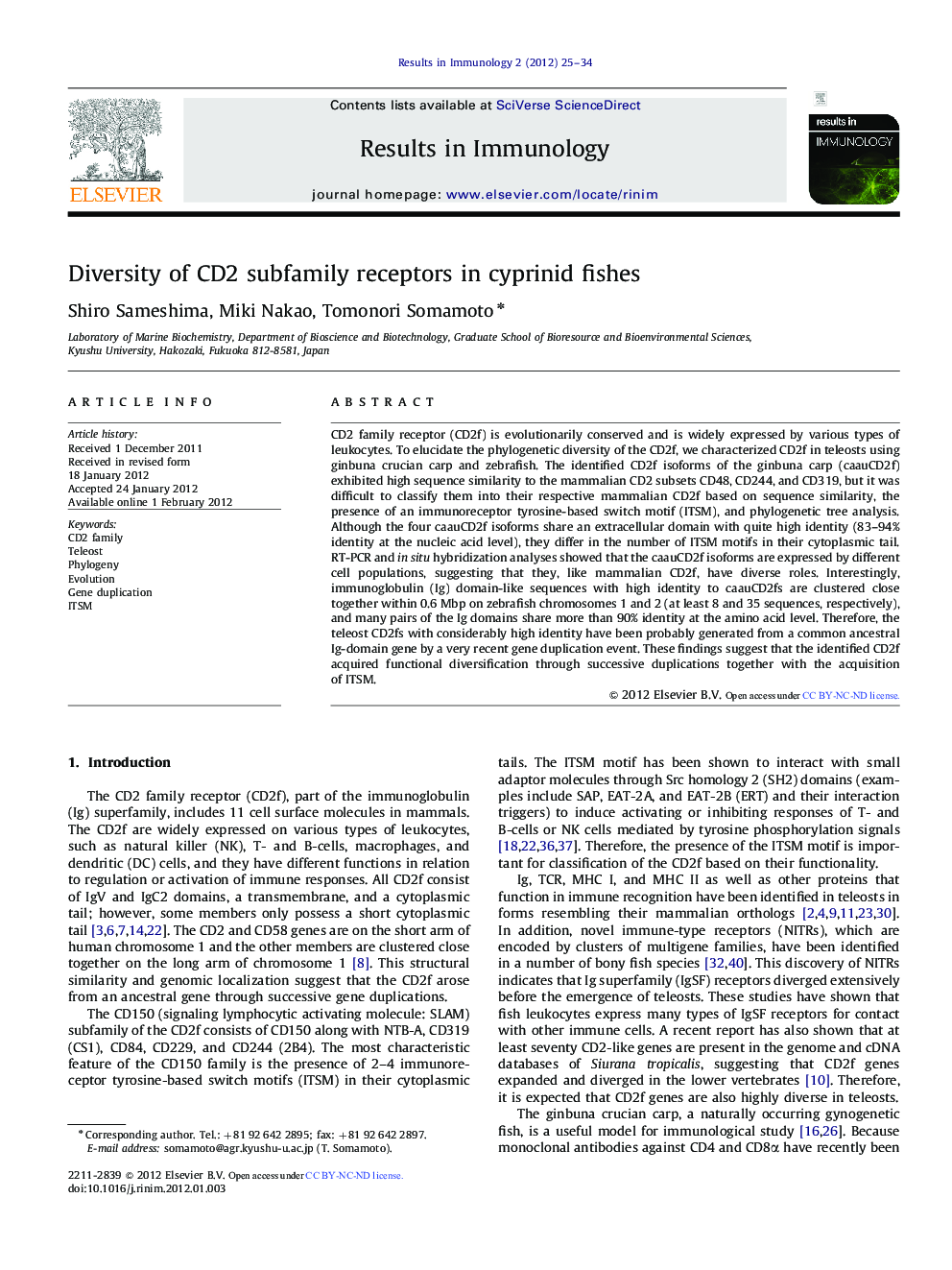| Article ID | Journal | Published Year | Pages | File Type |
|---|---|---|---|---|
| 2202422 | Results in Immunology | 2012 | 10 Pages |
CD2 family receptor (CD2f) is evolutionarily conserved and is widely expressed by various types of leukocytes. To elucidate the phylogenetic diversity of the CD2f, we characterized CD2f in teleosts using ginbuna crucian carp and zebrafish. The identified CD2f isoforms of the ginbuna carp (caauCD2f) exhibited high sequence similarity to the mammalian CD2 subsets CD48, CD244, and CD319, but it was difficult to classify them into their respective mammalian CD2f based on sequence similarity, the presence of an immunoreceptor tyrosine-based switch motif (ITSM), and phylogenetic tree analysis. Although the four caauCD2f isoforms share an extracellular domain with quite high identity (83–94% identity at the nucleic acid level), they differ in the number of ITSM motifs in their cytoplasmic tail. RT-PCR and in situ hybridization analyses showed that the caauCD2f isoforms are expressed by different cell populations, suggesting that they, like mammalian CD2f, have diverse roles. Interestingly, immunoglobulin (Ig) domain-like sequences with high identity to caauCD2fs are clustered close together within 0.6 Mbp on zebrafish chromosomes 1 and 2 (at least 8 and 35 sequences, respectively), and many pairs of the Ig domains share more than 90% identity at the amino acid level. Therefore, the teleost CD2fs with considerably high identity have been probably generated from a common ancestral Ig-domain gene by a very recent gene duplication event. These findings suggest that the identified CD2f acquired functional diversification through successive duplications together with the acquisition of ITSM.
► Multiple CD2-like genes were identified in ginbuna crucian carp and zebrafish. ► The CD2-like genes share an extracellular domain with quite high identity. ► They differ in the number of ITSM motifs in their cytoplasmic tail. ► They form two compact clusters on different chromosomes of zebrafish. ► They are expressed by different cell populations.
